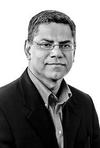Beautiful experiments
Recent experimental demonstration of quantum criticality at the University of Chicago (1) , provides glimpses of the lost art of insight generation by combining theory with beautiful experiments. It seems to have raised several interesting avenues to pursue including understanding exotic phenomena such as the early universe and gravitational singularities, in simulations. The fact that it provides a different framework for matter itself at 10 nano-Kelvin, also exposes the futility of attempting to explain the unknown by incrementally extending status-quo theories to time and space scales, in which they become invalid.
This has been a problem. Most are unwilling to throw out established ideas, even though they are unable to provide an integrated view of the system. The tendency has been to "plug," the equation with yet another unknown and hope that someday it will become clearer. The Chicago experiment shows that a unified theory based on established assumptions is either unlikely or faulty. Since it is unclear how matter behaves in much of the universe, it is futile to attempt a theory of it. What is more important is to postulate mathematical possibilities and then attempt to support them in experiments – that takes imagination and not long tunnels and big steel.
Attempting to prove the status-quo or even creating a theory based on current assumptions are unlikely to bring new insights. Challenging the assumptions themselves is a more fertile path.
(1) Ultracold experiments heat up quantum research. Published: Monday, March 19, 2012 - 08:34 in Physics & Chemistry. Source: University of Chicago






